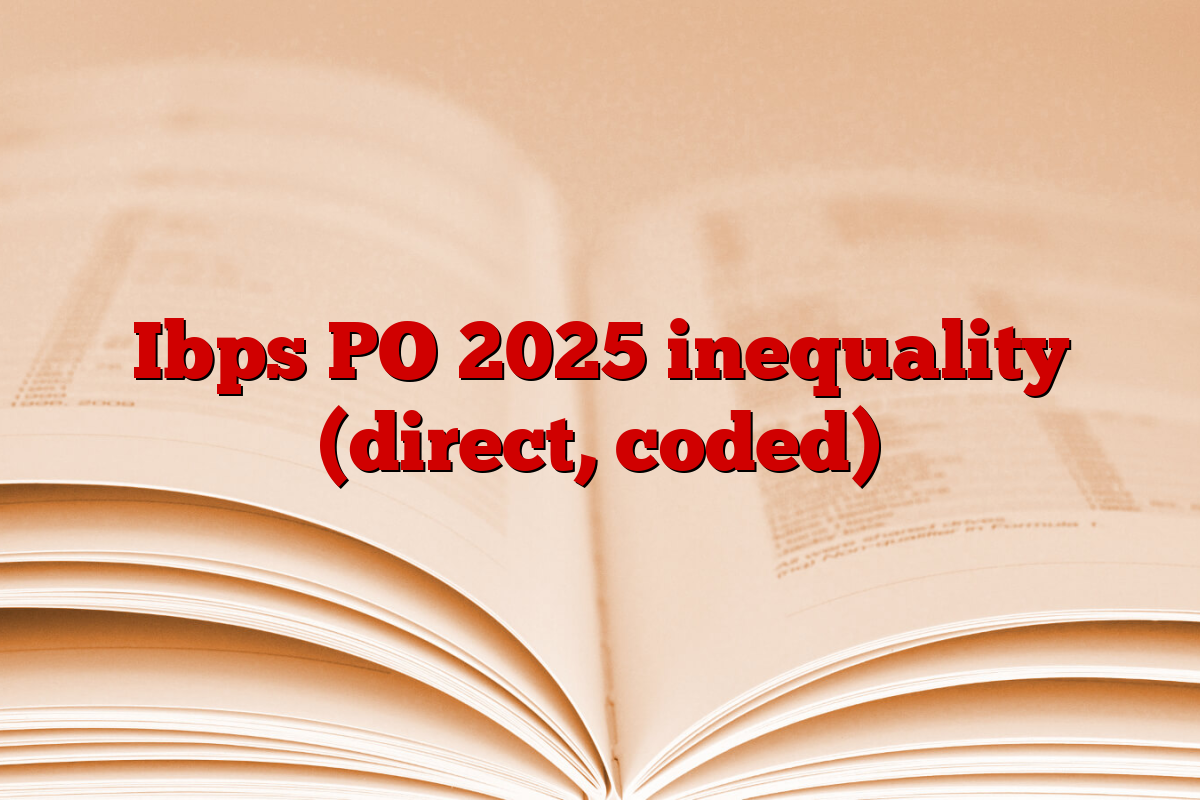IBPS PO 2025 inequality questions are an important part of the logic section. These questions assess the ability of the candidate to understand and interpret the relationship between different variables or conditions using various symbols. Ibps PO 2025 inequality (direct, coded) is usually found in the logic section. These questions test symbols or code using the ability to understand and interpret the relationship between different variables or words. Questions of inequality are usually divided into two types: direct inequality and coded inequality.
IBPS PO Disbacy for 2025
Inequality problems can be broadly classified into two categories: direct inequality and coded inequality. In direct inequality, the relationship between the variables is clearly presented, while in coded inequality, relationships are provided in a symbolic format that requires decoding. Both types of inequality questions test logical argument skills, and it is necessary to master them to score well in these competitive exams.
1. Direct inequality for IBPS PO 2025
In direct inequality questions, the relationship between the variables is provided directly, and you need to analyze them to find the correct answer.
Used symbols:
- > The meaning “more than”.
- ≥ means “more than or more than”.
- ≤ means “less or equal.”
- = Means “equal to.”
- ≠ means “not equal to.”
Example of direct inequality:
Find relationship between A and D
Solution,
- A> B and B, C, we can say A> C.
- C
- Therefore, A> C <डी। इसलिए, ए> D.
2. Coded inequality for IBPS PO 2025
In coded inequality, the relationship between variables is given in a coded format, which usually includes some symbols, and you need to decod them to understand the relationship.
Example of coded inequality:
- A $ B means A> B.
- A * B means AB B.
- A # B means A
Example Question:
Find the relationship between A $ B, B * C, and C # D, A and D.
Solution:
- A $ B → A> B.
- B * C → B – C.
- C # d → c
A> B, B, C, and C <डी को मिलाकर, हम कह सकते हैं कि ए> B ≥ C Therefore, the relationship between A and D is A> D.Tips to solve inequality questions:
